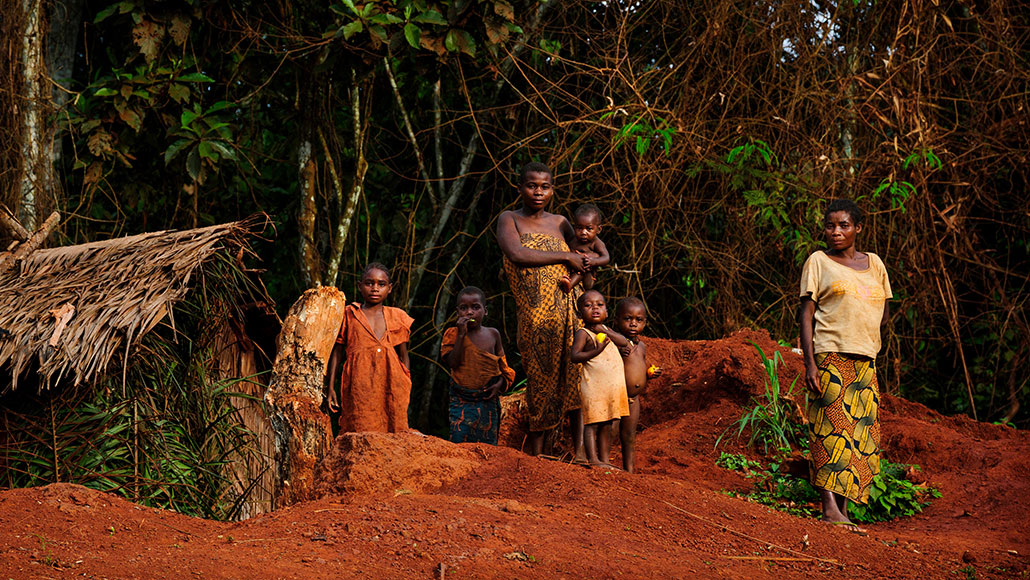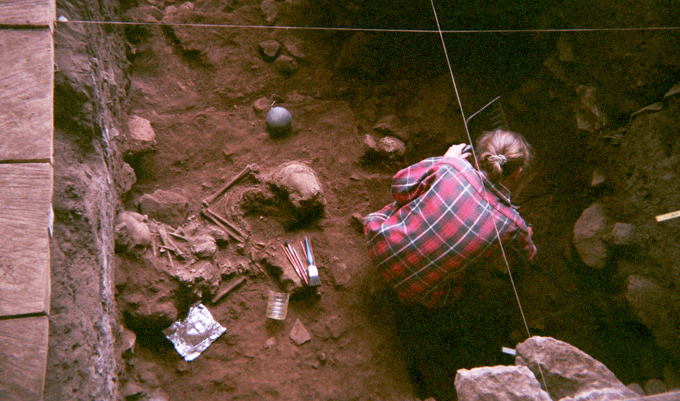
Ancient DNA from four African children shows a close genetic connection to present-day hunter-gatherers from Cameroon, such as these Baka people, and a nearby foraging group in the Central African Republic.
Mattias Klum/National Geographic Image Collection/Alamy Stock Photo
Four ancient youngsters, one pair from around 8,000 years ago and another from about 3,000 years ago, have opened a window on humankind’s far older, far-flung African origins.
Analyses of the west-central African children’s DNA indicate that at least three major human lineages —ancestral to either today’s central African hunter-gatherers, southern African hunter-gatherers or all other present-day people — genetically diverged from each other in rapid succession between roughly 250,000 and 200,000 years ago.
A fourth, previously unknown human population also emerged in that time span and left a small genetic mark on modern western and eastern Africans, a team led by evolutionary geneticists Mark Lipson and David Reich, both of Harvard Medical School, reports online January 22 in Nature. That human line possessed a small amount of DNA from hominid populations that had originated before the rise of the human species, possibly Neandertals.
“This quadruple radiation [of human lineages] had not been identified before from DNA,” Reich says.
That genetic evidence from the long-dead kids fits a scenario in which different Homo sapiens populations emerged in different parts of Africa as early as around 300,000 years ago, followed by a mixing and mingling of populations across the continent (SN: 9/28/17).
A previous genetic study, led by evolutionary geneticist Pontus Skoglund of the Francis Crick Institute in London, identified a human population originating more than 200,000 years ago that was ancestral to later rainforest hunter-gatherer groups in western and central sub-Saharan Africa. The new study provides further evidence for that ancestral line: Ancient children in the new study carried a minority of ancestry from those ancient forerunners of rainforest groups.
Genetic data in the new study provide “the only ancient DNA record from so far west in sub-Saharan Africa,” Skoglund says.
Lipson’s group extracted DNA from four children buried at Shum Laka, a rock-shelter in northwestern Cameroon. Excavations there in the 1980s and 1990s yielded stone tools and other artifacts from hunter-gatherers spanning the last 30,000 years. The site also served as a cemetery for extended families. A total of 18 human skeletons, most from children, have been unearthed at Shum Laka. Some burials date to about 8,000 years ago, others to around 3,000 years ago.

The four Shum Laka children who yielded DNA — three boys and a girl — ranged in age at the time of death from around 4 to 15 years old.
Based on linguistic and genetic evidence, researchers generally consider the region of Cameroon that includes Shum Laka to have been the place where Bantu languages, spoken by many Africans today, originated and spread across the continent’s southern half after around 4,000 years ago. The Bantu expansion is thought to explain why the majority of people in that swath of Africa now display close genetic connections.
Intriguingly, current Bantu speakers are not closely related to the Shum Laka children, the researchers say. The ancient kids inherited about two-thirds of their DNA from a previously unknown population distantly related to present-day West Africans. The rest of the genetic material came from the lineage outlined in the earlier Skoglund-led study that was ancestral to hunter-gatherers now living in central Africa. Present-day central African hunter-gatherers have a different ancestry from most Bantu speakers today.
As a result, Bantu speakers across Africa likely didn’t descend from the ancient Shum Laka population, the researchers say. But other human groups could have lived in west-central Africa around the same time, including some who conversed in early Bantu tongues, Lipson and his colleagues speculate.
Another provocative new discovery concerns one of the Shum Laka youngsters, an adolescent male buried around 8,000 years ago. That boy possessed a rare set of Y chromosome gene variants, which are passed from father to son. It’s the first known ancient DNA from this unusually old paternal lineage. Today, this particular paternal lineage is found almost nowhere outside of two ethnic groups in western Cameroon today. Previous research suggests this male genetic line dates back to between 200,000 and 300,000 years ago, making it the oldest one known. It’s unclear why only one of the three ancient African boys in the new study came from that ancient male line of descent.






